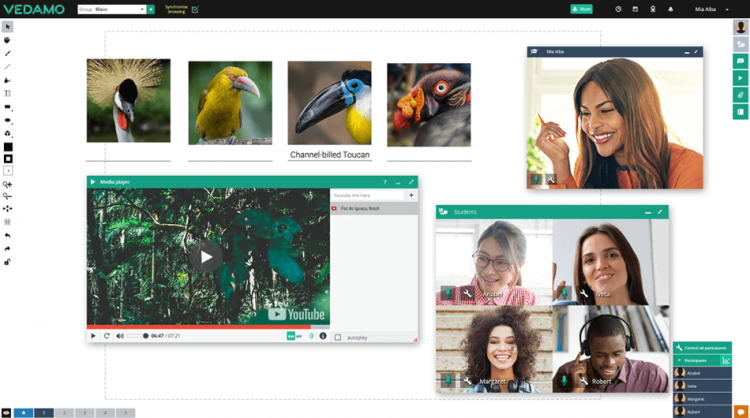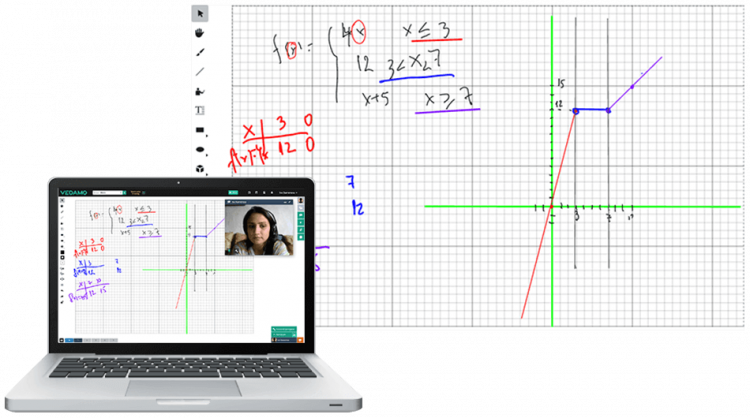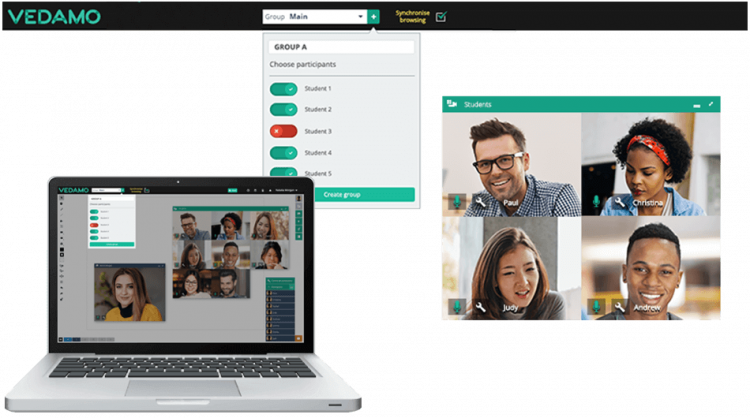Many teachers struggle when it comes to virtual teaching. In this article we give ideas on how to overcome the most commonly reported issues.
As educational tools go, virtual classrooms are one of the newest and best technologies. When getting ready to apply it to their practice, teachers need to establish a creative mindset that will completely change their and their students’ experience.
Why the Virtual Classroom?
Many teachers seem to have difficulty grasping the new tools provided for their practice by the technology of the virtual classroom. Some of these reasons are:

- they find it hard to invest time and effort in learning all about it
- they see no point in changing what has worked so well to date
- they believe that students will get distracted all the time
- they have tools at their disposal that just won’t work in a virtual environment
- they need close interactions with their students so they can analyze the lesson’s outcome
There are many reasons why a teacher would turn down the opportunity to teach in a virtual classroom, but the benefits of doing so seem to outweigh the disadvantages. For example:
- new tools mean completely new creative ways of displaying material
- multimedia and online tools are accessible on demand
- opportunity is given to rethink and create better lessons
- students find it comfortable
- teaching online saves a lot of time and expenses for traveling and equipment
- all geographical factors are eliminated
- feedback is easily provided
While adjusting your teaching content for the virtual classroom may seem like a challenge, it is also a great opportunity. Remaking a whole course, for example, gives an educator new points of view and opens new horizons for putting it into context in a completely new way, which could turn their whole practice around. It is all matter of having the right mindset.
Difficulties Encountered by Teachers
If we are to search for the best way to create our lesson and select a virtual classroom, then we need to identify the obstacles that we might face.
Here are top 3 difficulties (and their solutions) as reported by teachers who tried out VEDAMO’S virtual classroom system:

- Technology: Many teachers report that they find it problematic as far as technical knowledge requirements go. Actually, there is nothing to worry about. Virtual classroom technology requires almost no technical preparation. Logging into VEDAMO is much like entering your email and sending a new message with just a few extra steps.
- Tools: Another common obstacle for educators is the idea that they need to put aside their usual teacher’s tool kit and adjust the teaching process to a “hands-off” approach. This is a difficult thing to overcome, but it is a one-time effort; in addition, VEDAMO offers you the ability to make templates. Once designed, they can be applied every time you need them.
- Students: Some teachers are bothered by the lack of access to some of the tools that help them “read” their students’ mood and body language. While this may be difficult to overcome, body language also applies to facial expressions. In exchange for losing the ability to monitor the entire classroom, virtual classroom systems offer a variety of feedback tools that can give the teacher a lot of information for future reference.
Virtual Classroom Mindset
Solutions for the difficulties mentioned above are easy to find inside virtual classrooms themselves. The examples described here have been tested in VEDAMO, but they can easily be adapted to any other system. The most important part of the virtual classroom mindset is to get creative. The teaching tools may be different, but this only means that your classrooms now have space for all your great ideas.
Get creative
Instead of being anxious about the technology, embrace its features. For example, if a teacher would like to make a simple presentation in their classroom using a projector, it is easier to do in a virtual classroom where all you need to do is load the materials onto the online whiteboard. As a bonus, if this component is used for only a part of your lesson, you can easily set up all the materials that you will need on another “hidden” screen so that the students won’t lose their work rhythm while they wait for you to do it.
Presentations are just one example; you can also directly load pictures, videos, document files, reading exercises, articles, math problems, or whatever else you may need.
Get drawing

Every teacher loves to make an occasional drawing. They may not be great painters, but visuals are an important element. In the virtual classroom everyone can draw using the shapes and tools incorporated into the program, and it is as easy as using a painting program on your computer.
Get playing
Games are a key element to a good lesson, especially when working with children. Creating a game has never been easier due to the virtual classroom’s tools that are visual and easily adapted for this purpose.
Get inside a group

Working in small groups and pairs is an important part of the educational process. A virtual classroom allows you to separate students into groups that cannot hear or see others who are outside of the group until the teacher allows it. This way their own creativity is boosted because there is no way for them to copy anyone else’s ideas.
Get seen
If the inability to see your students’ body language is one of your arguments against virtual classrooms, then create the solution yourself by setting an example for your students by always smiling and trying to be as positive as possible.
